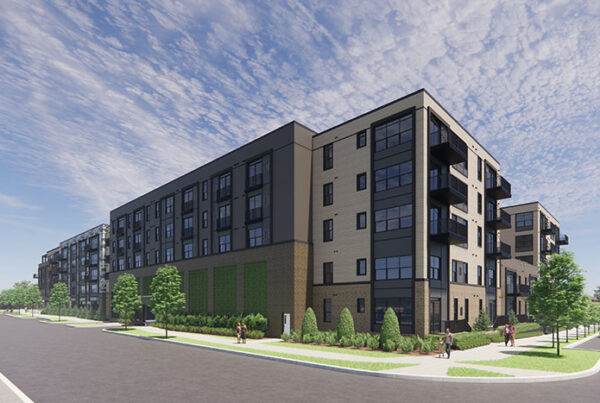
Ali Wolf, Zonda chief economist, highlighting some of the disparities in unemployment from the February non-farm payroll data as part of the 2021 ULI Housing Opportunity Conference.
Speaking at the 2021 ULI Housing Opportunity Conference, Ali Wolf, chief economist with Zonda, formerly Meyers Research, said that the homebuilding industry has been a bright spot in the U.S. economy over the last year. But rising mortgage rates and limited inventory are among the issues that may hamper that growth in 2021.
While the U.S. economy lost roughly 20 million jobs in a two-month period of 2020, Wolf said that the home market and the overall economy have improved since then. “We are in a K-shaped recovery,” she said. “Certain people and certain businesses have a higher net worth and higher profitability than they did this time last year. Housing being one of those [businesses] in the top half of the K, and our homebuyers falling in that part as well.”
Wolf went on to give examples of the other half of the K-shaped recovery, such as conferences, concerts, tourism, and other U.S. service sectors, which have largely not recovered so far. She said that the February jobs report gives her hope that the service sector is starting to recover, but also said that we are still 9.5 million jobs short of the pre-pandemic U.S. economy. “If we added every single job back from leisure and hospitality, we’d still be down 5 million [U.S. jobs],” Wolf said.
She highlighted that Las Vegas, Detroit, and Los Angeles had an implied unemployment rate of more than 10 percent as recently as January 2021, while Salt Lake City and Indianapolis had the lowest implied unemployment rates in the United States at below 4.5 percent.
Wolf said that the durable-goods sector of the economy has been doing particularly well, whether it is retail sales, auto sales, or home sales, as income and saving levels are up for those who are employed.

Christopher Ptomey (right), executive director of the ULI Terwilliger Center, speaking with Ali Wolf, Zonda’s chief economist, as part of the 2021 ULI Housing Opportunity Conference.
“Housing has proved to be the strongest sector of the U.S. economy, surprising basically everyone,” said Wolf. She added that there were a few weeks when the market was stalled, but since then the homebuilding sector has been an economic driver for the construction, manufacturing, and trade industries.
Wolf said that some builders are saying they are capping sales to better manage their inventory and deliver, so year over year the new-home sales numbers may start to slow down but demand remains strong. Jacksonville, Austin, and Raleigh, North Carolina, saw the largest increase in new-home pending sales year over year, with Jacksonville increasing more than 40 percent.
Wolf said that the inventory numbers through February 2021 are half of where they were even pre-pandemic in 2020. “Instead of talking about two months of supply, we’re talking about more like two weeks.” She highlighted that listings in markets such as Riverside-San Bernardino and Raleigh are down 60 to 70 percent year over year. Pricing has also responded to the lack of supply with markets such as Cleveland, Ohio, seeing prices up more than 9 percent year over year. “This is good for [consumer] confidence, but not so much for affordability,” Wolf said.
She said that factors like an increased U.S. savings rate and the performance of the S&P 500 stock index are likely to keep prices elevated in many markets, but in areas such as Atlanta, Raleigh, and Charlotte, affordability-to-income ratios will likely still attract buyers.
“We found that 60 percent of millennials saved more money in 2020 than they did in 2019,” said Wolf, citing Zonda survey data.
With some employers embracing the idea of increased remote work, out-of-market relocations will affect some markets more than others, she said. Citing Zonda survey data, Wolf said that the top reason cited for wanting to move for buyers ages 25 to 64 was the ability to work from anywhere, while older buyers cited “to be with family” as their top reason. Buyers also cited a need for more space or a home office as a top consideration when looking at a new home.
Wolf speculated that with the broader availability of vaccines, more owners may be willing to put their existing home on the market and make a significant move. Interest rates on both 10-year U.S. Treasury bonds and 30-year mortgages rose in January and February, she said, so the flow of money into home purchases may begin to decline.
Wolf says that her forecast is for an increase in single-family home starts for 2021, but also an increase in new-home sales of 6.7 percent year over year.
Christopher Ptomey, the executive director of the ULI Terwilliger Center, joined Wolf for a moderated question-and-answer session, and the first question was about the multifamily sector of the housing economy.
“Our multifamily practice has never been busier,” Wolf said. “Interestingly, we have a lot of active studies in New York City.” She said that her colleague who covers multifamily for Zonda sees some survey data indicating a movement from renting to buying but not a significant shift. Said Wolf, “There’s a lot of strength when you look at class A [rentals] in particular.”
She speculated that it is possible that some of the buyers will come from those who had moved back in with their own parents or extended family for any number of reasons.
Wolf also said that there may be “alarming” inflation numbers in the coming months as prices snap back in various sectors from very low levels.


